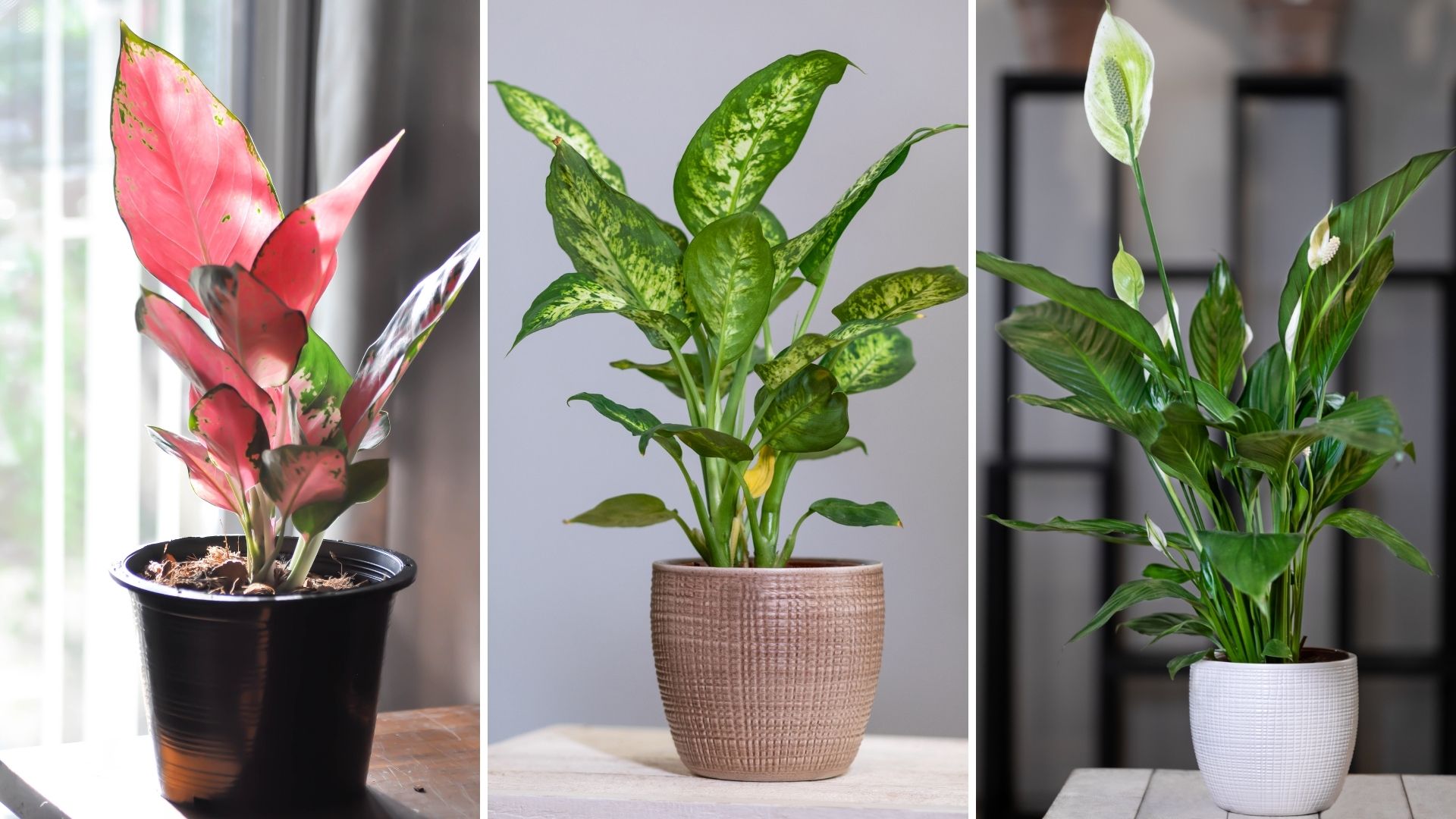
Windowless rooms are a drag to decorate. Luckily, there are plants that will thrive even in this hostile environment.
Low-light plant varieties are perfect for rooms without windows. If they get pale or leggy, turn on your grow lights and they will have everything they need for proper growth.
Here are 23 species that can tolerate low-light conditions!
Let’s get started!
#1 Aglaonema
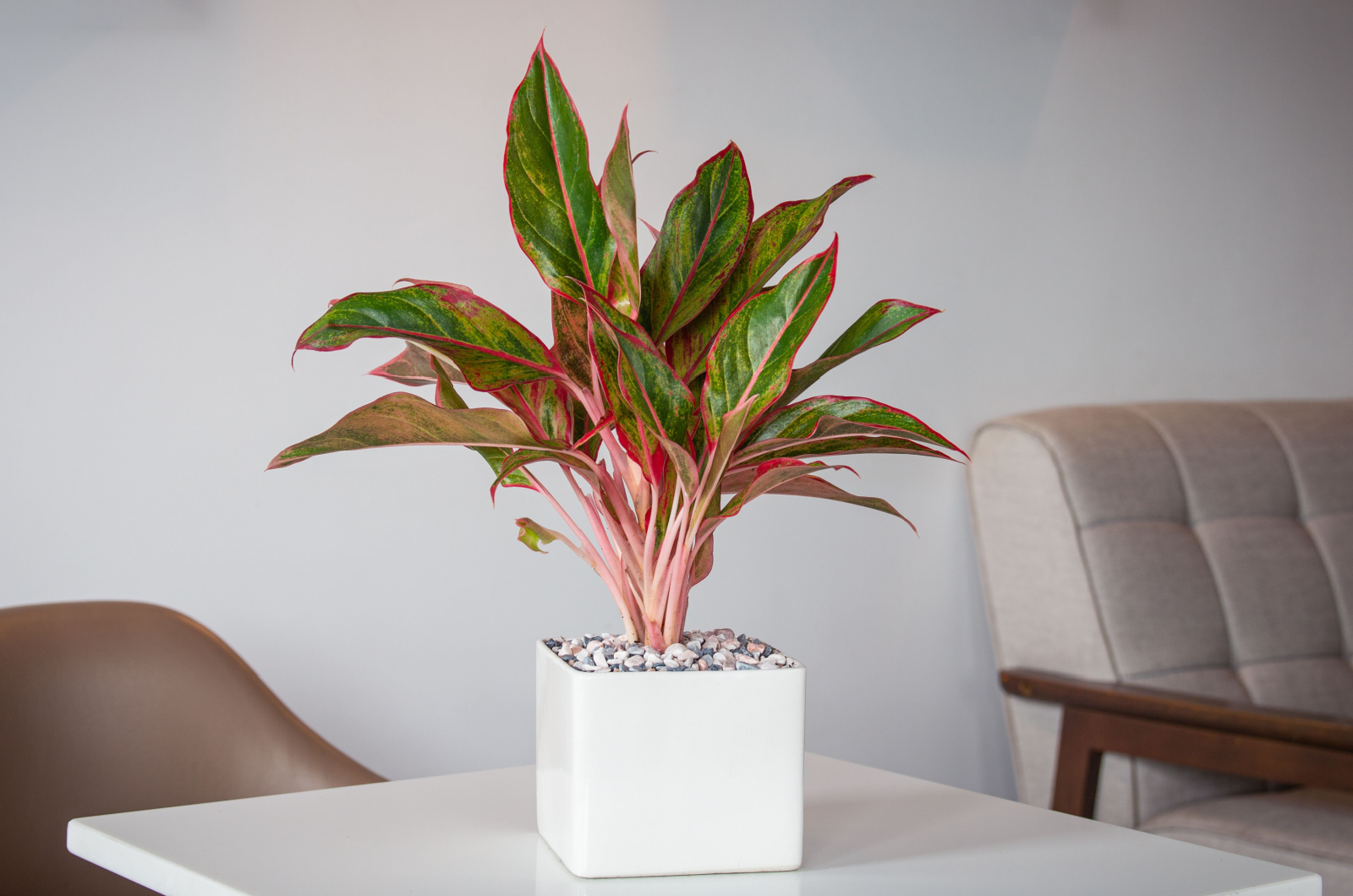
Soil: Loose and well-draining
Water: When the top is dry
Size: 1-3 ft tall
I love aglaonemas! They come in all colors, shapes, and sizes. Pink, red, creamy, white, silvery, and green variegations are all perfect in their own fashion.
And the best part is that all aglaonema varieties have the exact same needs; not too much sunlight, a bit of moisture, and a light potting mix.
#2 Air Plant
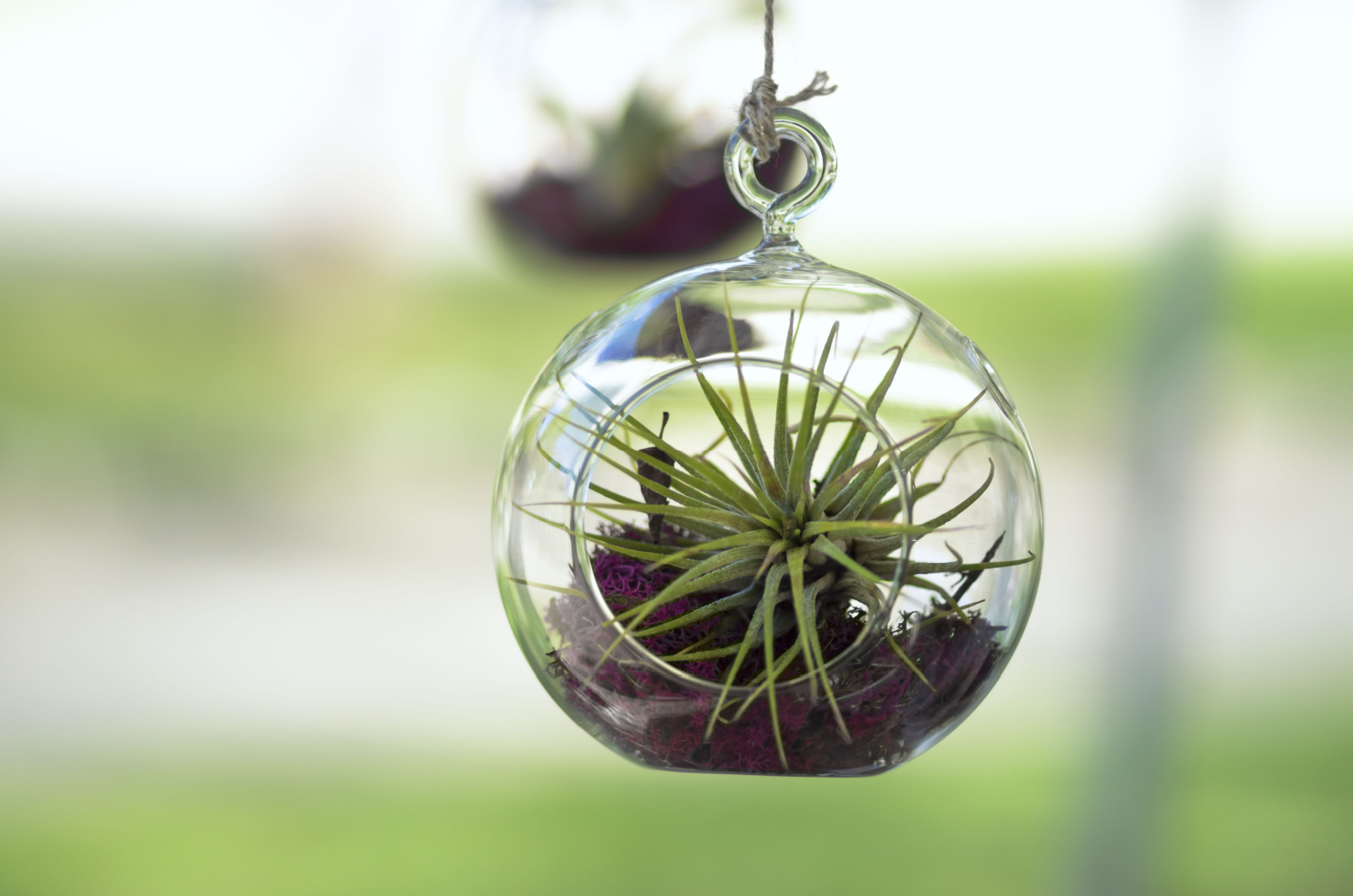
Soil: No soil needed
Water: When its leaves curl inwards
Size: 2 in-7 ft tall, 1 in-4 ft wide
Air plants are perfect house companions. They don’t need any type of soil, they thrive in low-light levels, and they only require weekly watering to flourish.
Place it in a decorative glass container or a terrarium, and you’ll get yourself a unique decoration.
The good news is that the air plant lifespan is about 2-5 years, so you don’t have to worry about replacing your decoration any time soon!

Subscribe to the Positive Bloom Gardening Club for FREE!
Get the latest tips, exclusive gardening secrets, and insights for FREE straight to your inbox!
#3 Anthurium
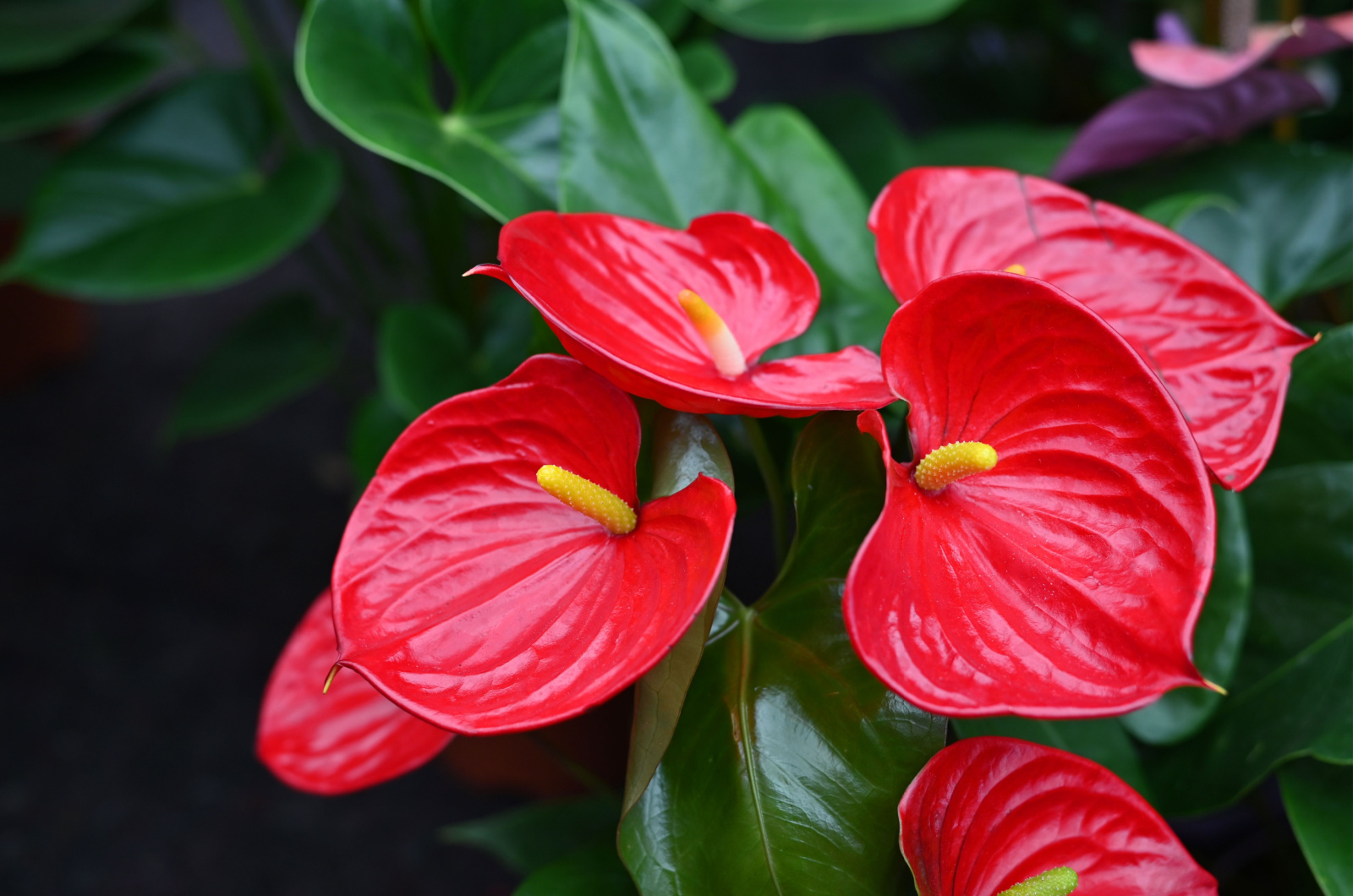
Soil: Nutrient-rich and well-draining
Water: When the top is dry
Size: 12-18 in tall, 10-12 in wide
Anthurium light requirements are simple to remember. Give this plant indirect sunlight and it will flourish.
This houseplant is a welcome sight in winter with its orange, red, pink, purple, or white flowers. And even when it’s not flowering, it has something to offer – gorgeous heart-shaped foliage!
#4 Arrowhead Vine (Syngonium)
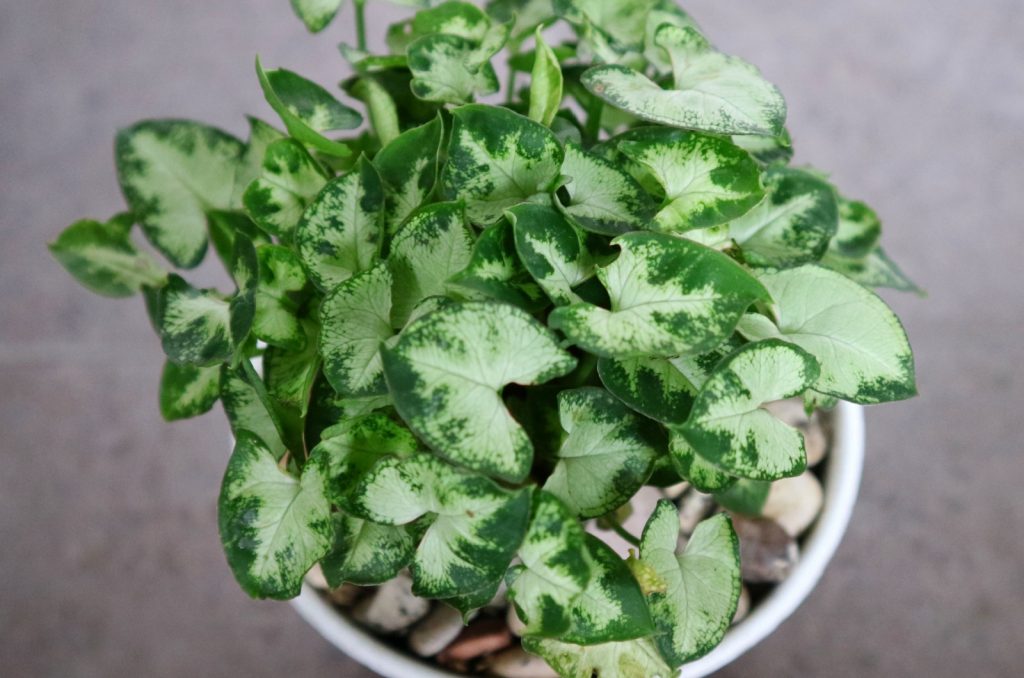
Soil: Loose, nutrient-rich, and well-draining
Water: When the top is dry
Size: 3-6 ft tall, 1-2 ft wide
I love plants that come in all shapes and sizes! That’s the thing with the arrowhead vine. There are so many syngonium varieties out there that you’re bound to find something for your home.
Speckled and light green, pink, deep green, creamy, and gold are all the colors this one plant can obtain. You just have to find one that fits your interior decor!
And my favorite part is that you can shape syngoniums to your liking. Trim it into a bush, train onto a trellis, or let it hang from the ceiling – your options are endless!
#5 Begonia
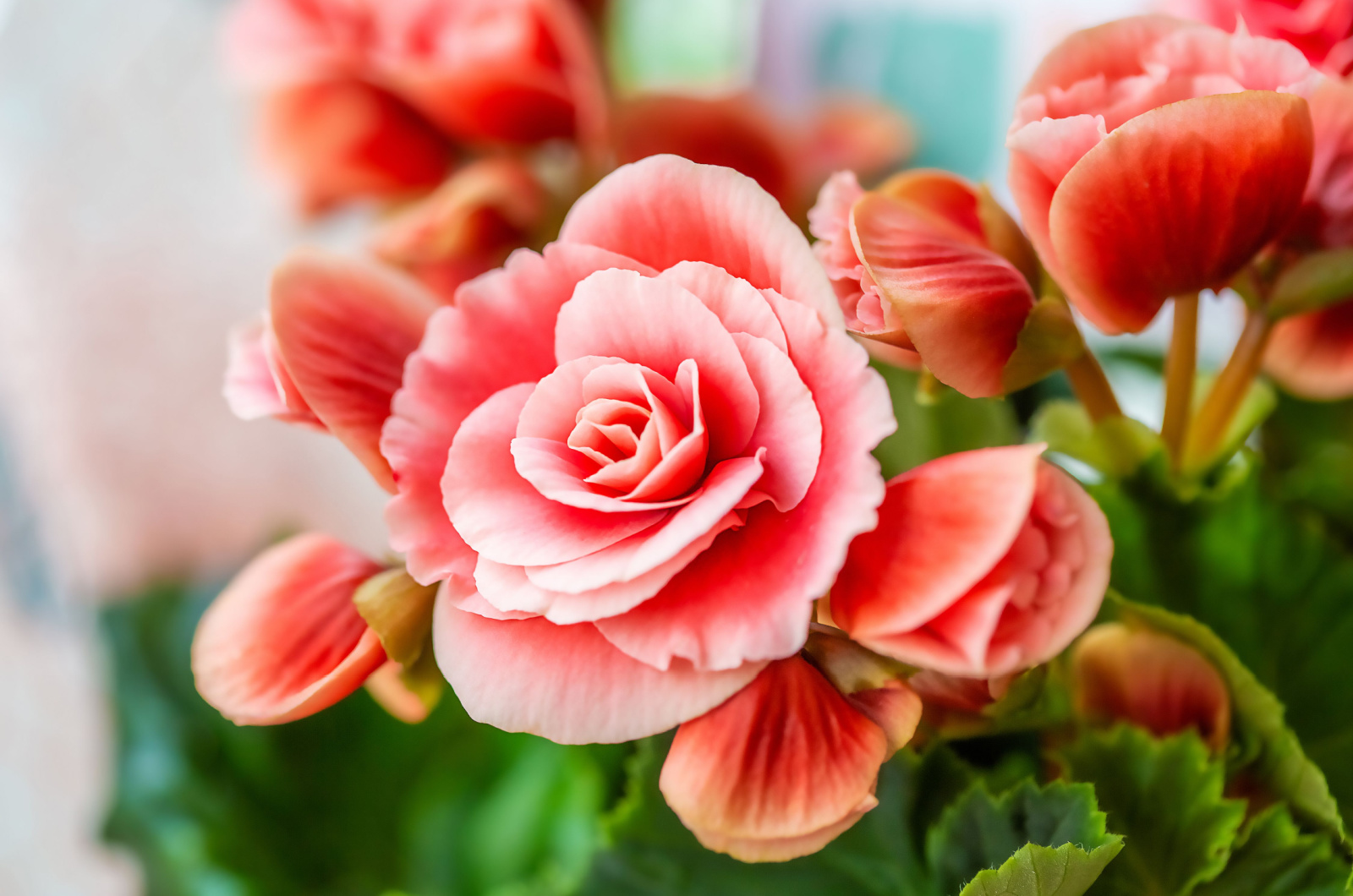
Soil: Rich, loamy, and well-draining
Water: When the top is dry
Size: Up to a foot tall
The potted begonia care guide is everything you could hope for and more! You won’t need to irrigate or feed your plant that often if you select the proper soil.
And if you keep your plant in lower light levels, it will need even less food and moisture.
The jewel-shaped leaves are perfect on their own, but they’re not the only thing this plant has to offer. The plant will adorn your home with colorful flowers, but you will have to give it a bit more light in order to achieve this.
#6 Boston Fern
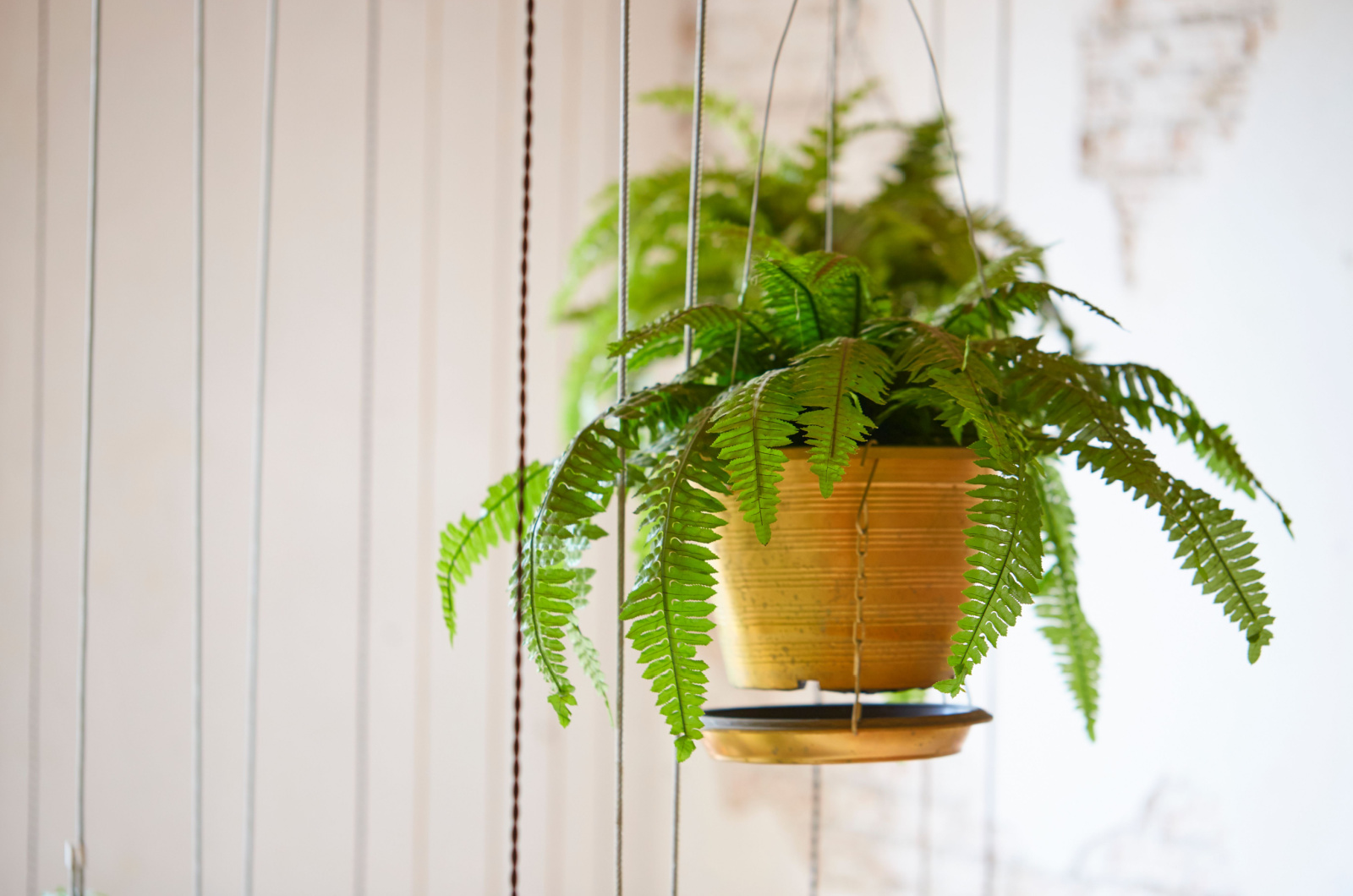
Soil: Rich, moist, and well-draining
Water: When the top is dry
Size: 1-3 ft tall, 2-3 ft wide
The fluffy appearance of this fern makes it a perfect choice to round up all the angular features of modern homes.
And the best part about it is that Boston fern propagation is simple, so you’ll be able to multiply your plant as much as you want without spending extra money.
P.S. Almost all other indoor ferns are low-maintenance. Combine the Boston fern with the bird’s nest, button, Kimberly queen, or mother ferns.
#7 Cast Iron Plant
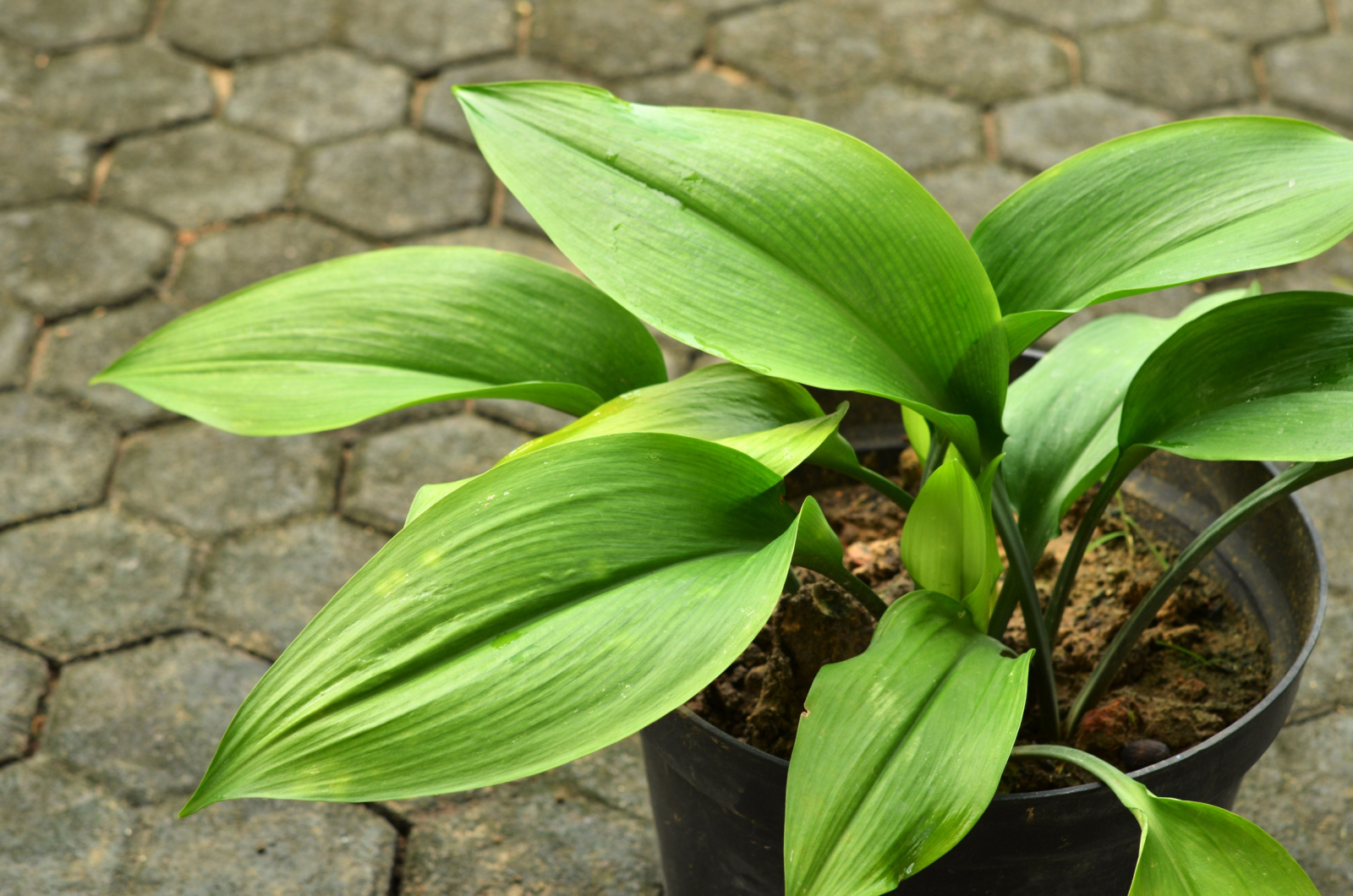
Soil: Humus-rich and well-draining
Water: When the top is dry
Size: 2-3 ft tall, 1-2 ft wide
You can find the cast iron plant on the list of plants perfect for north-facing windows. That means it doesn’t need that much sunlight to thrive.
The cast iron plant doesn’t grow that fast, so you won’t have to repot it often. And the best part about it is that there is a variegated form if you want it.
Although, it is difficult to find. Don’t ask me how I know that!
#8 Christmas Cactus
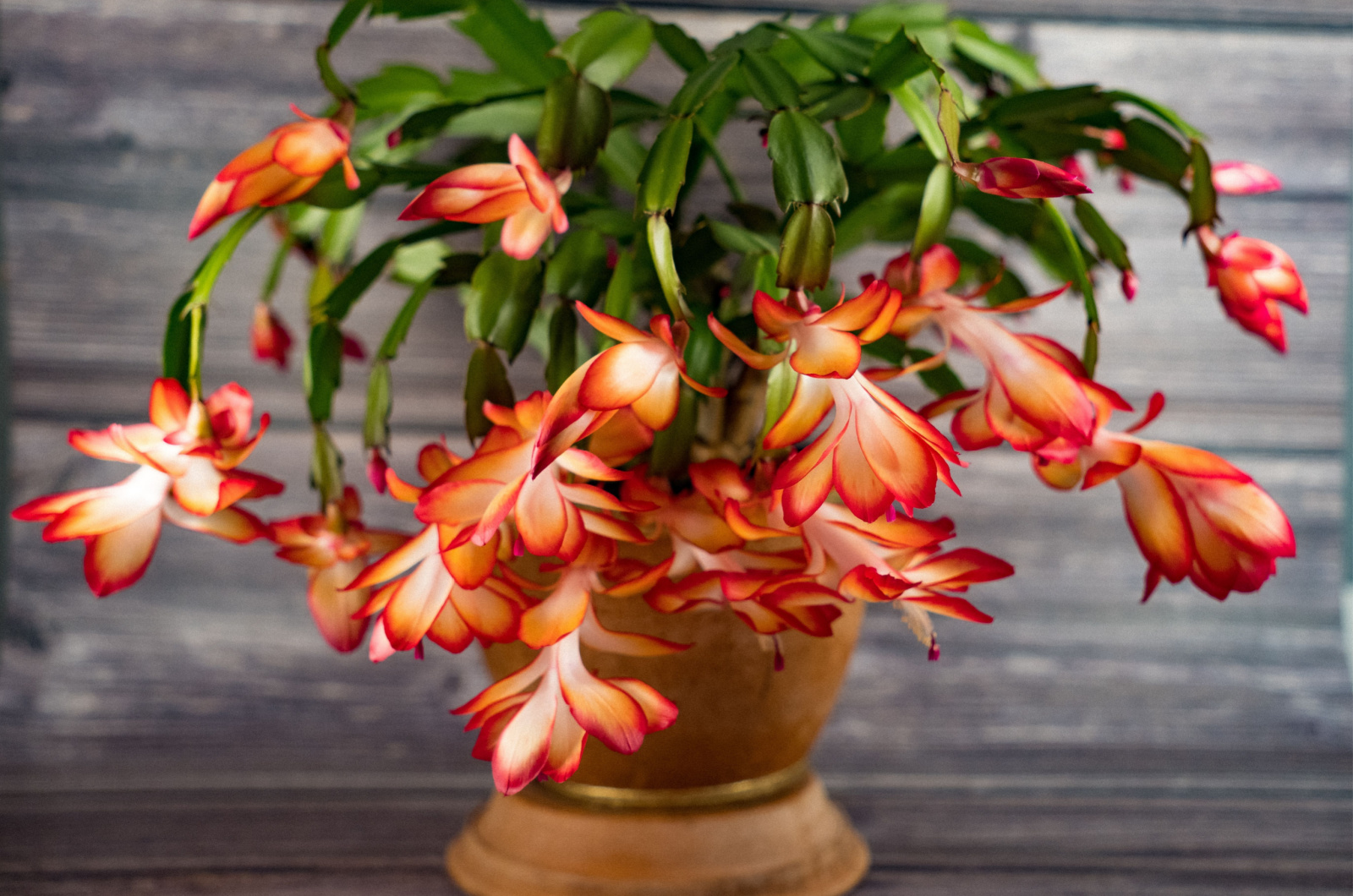
Soil: Fertile and well-draining
Water: When the top is dry
Size: 6-12 in tall, 12-24 in wide
This easy-going plant may be all you need this winter. It blooms around Christmas, when it can make your holidays a lot more cozy.
It doesn’t need too much light, although one question remains: Can you keep your Christmas cactus in complete darkness? Placing this plant in the dark every now and then will induce blooming, so…
#9 Dieffenbachia
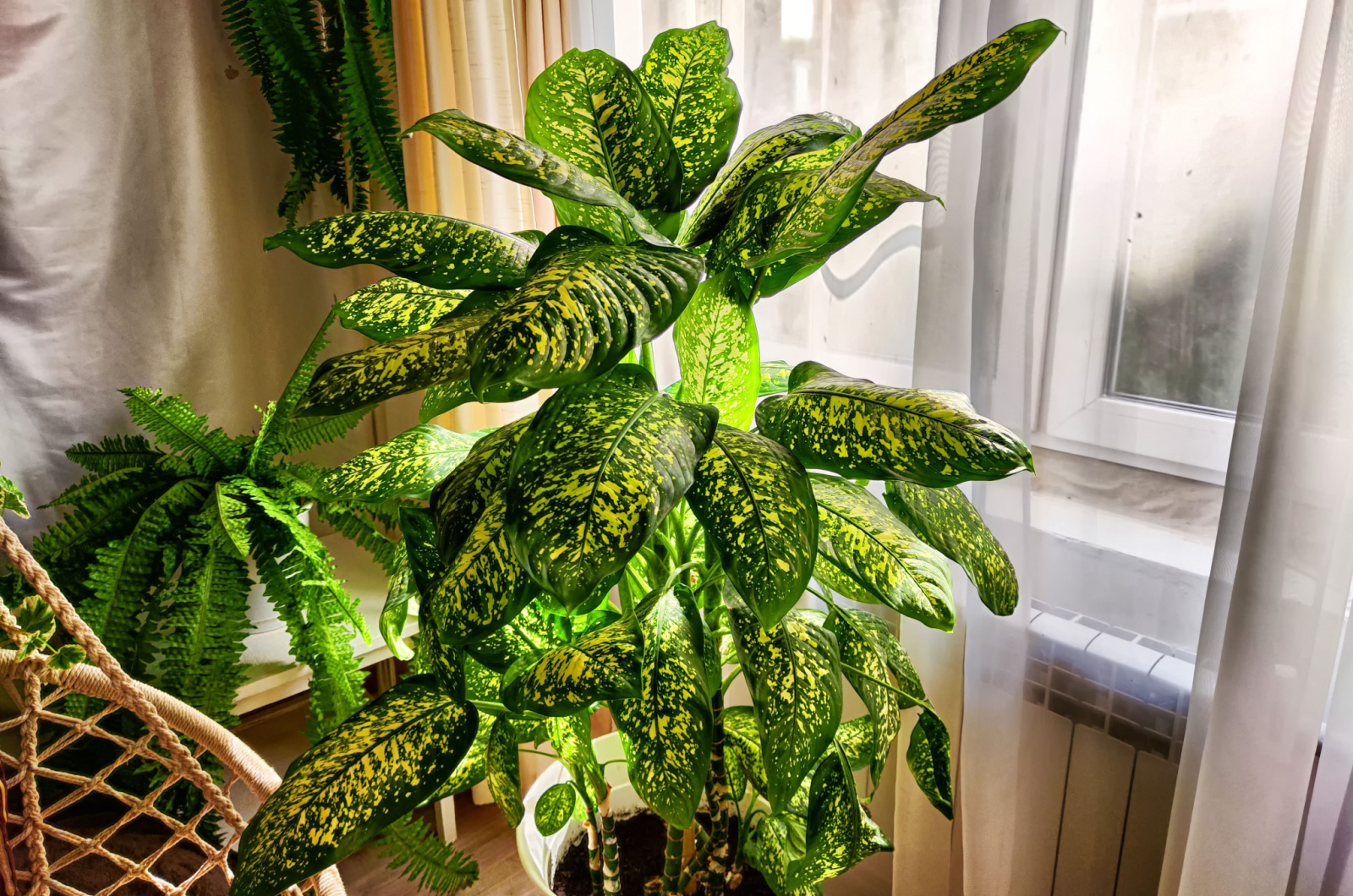
Soil: Light and well-draining
Water: When the top is dry
Size: 1-3 ft tall as a houseplant
What I love about this plant is that there are many dieffenbachia varieties, so there’s something for everyone.
Creamy speckles, yellow patches or centers, white veins, lime green variegations, white mottles, and other patterns may adorn your home.
And although they can all grow in rooms without windows, their colors will truly pop in bright, indirect light.
#10 English Ivy
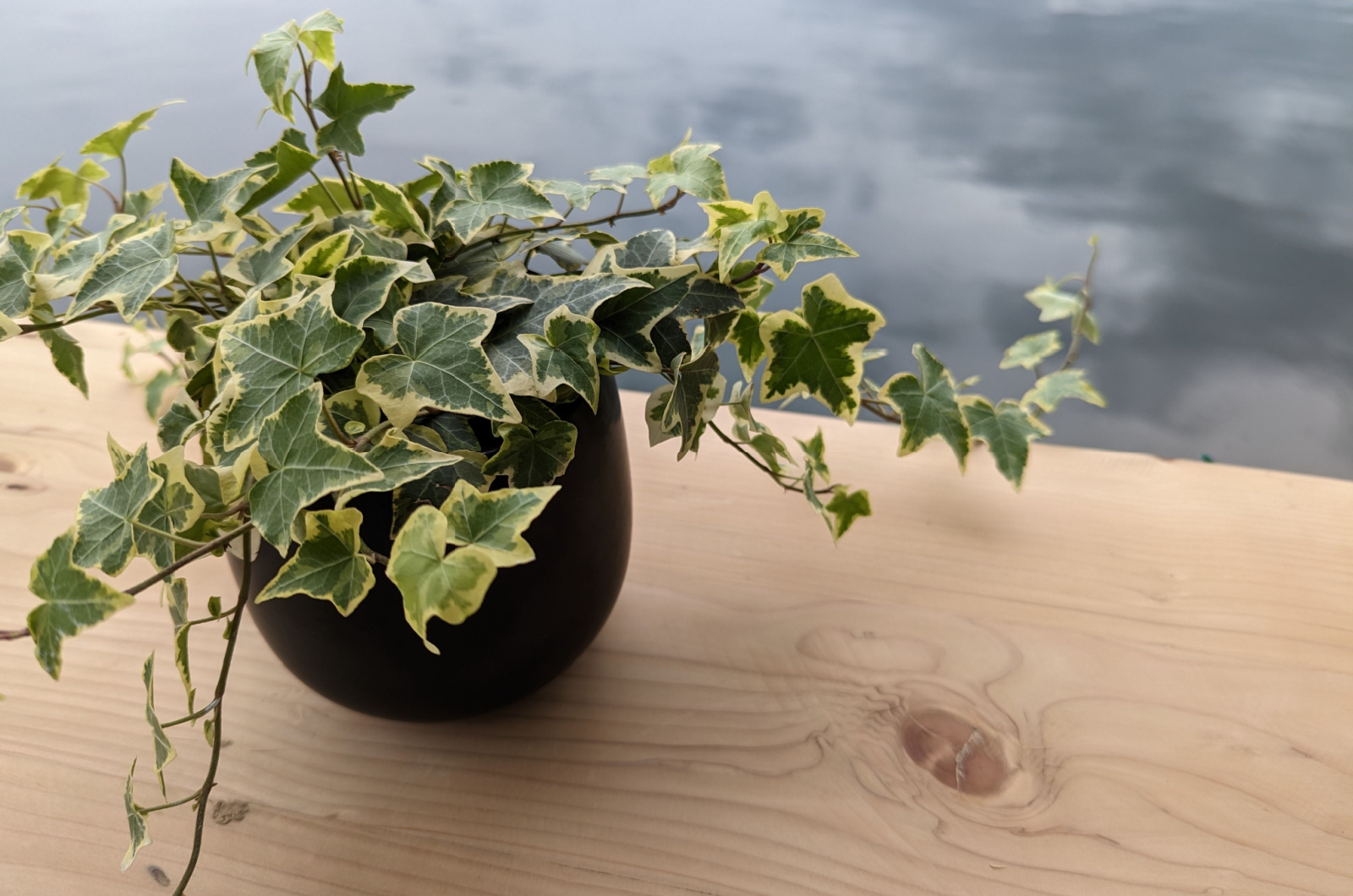
Soil: Loamy and well-draining
Water: When the top is dry
Size: 20-30 ft tall, 15 ft wide
English ivy isn’t the kind of plant I’d like encompassing my outer walls, but it makes for a perfect indoor plant.
It doesn’t need a lot of sunlight; it can grow in almost any potting mix, and you can even find it on the list of houseplants you can grow in water!
The best part about English ivy is that you can train it however you want. Grow it on a trellis, shape it into a topiary, or let it spill from your hanging baskets.
#11 Gloxinia
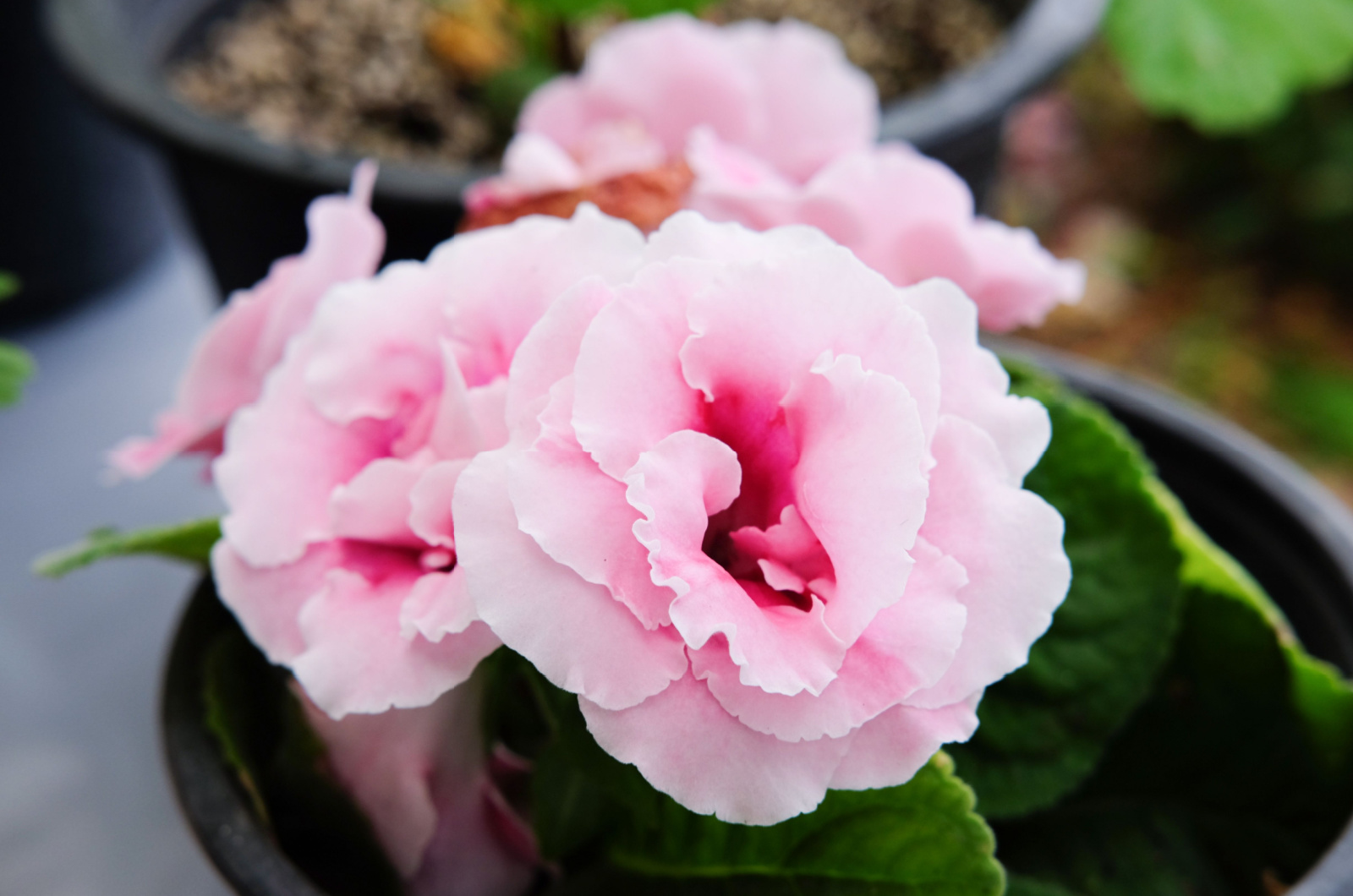
Soil: Moist and well-draining
Water: When the soil is dry
Size: Up to a foot tall
This plant is a relative to African violets and will brighten up your space with minimum lighting.
Of course, it will do best in bright indirect sunlight, so you should turn on those grow lights from time to time.
Once you see its velvety, trumpet-shaped flowers for the first time, you’ll forget about the dreary looks of your windowless room.
#12 Nerve Plant
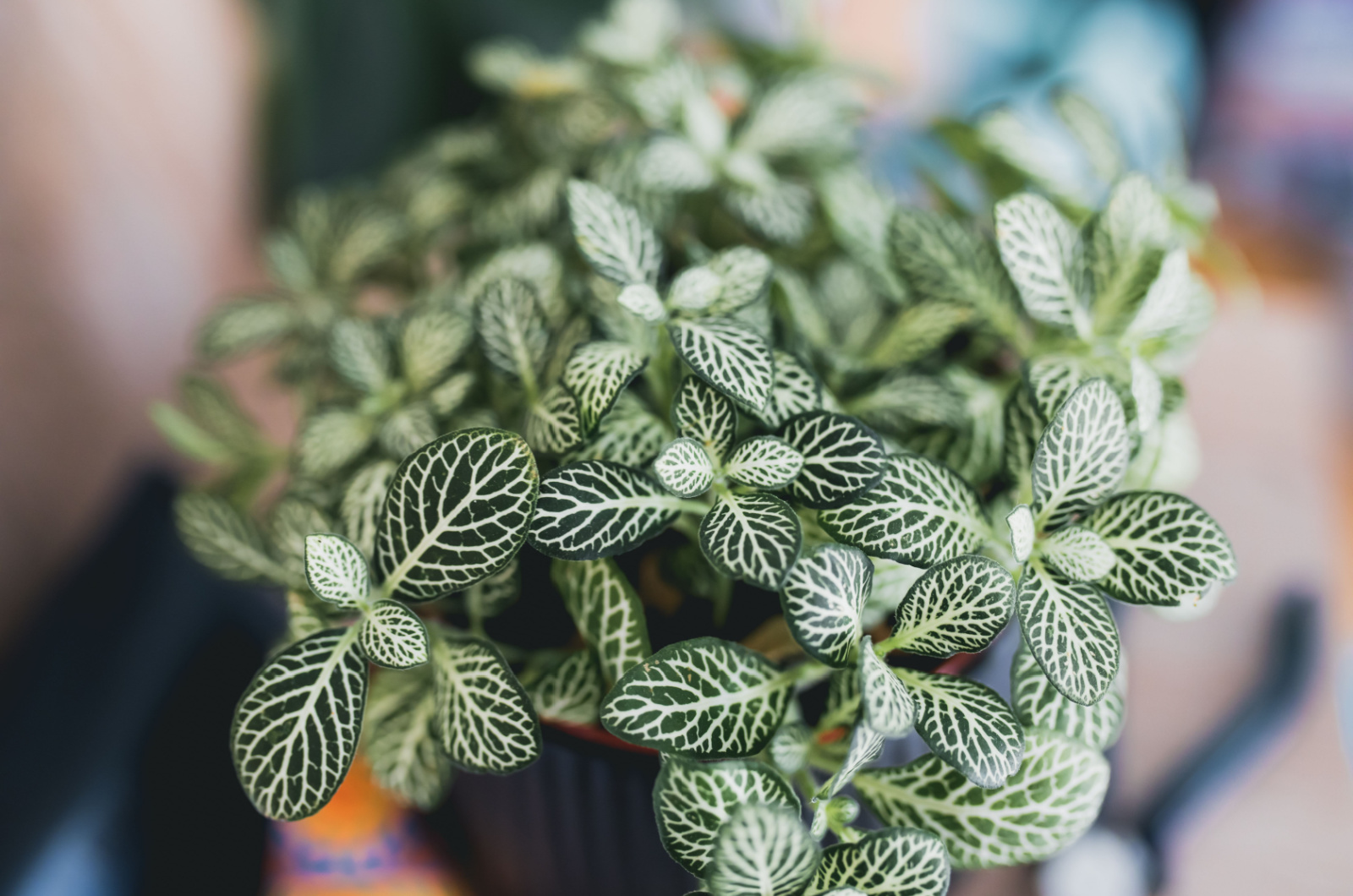
Soil: Rich and well-draining
Water: When the top is dry
Size: 3-6 in tall, 12-18 in trailing
No, it doesn’t get on your nerves, and it doesn’t make you nervous! This gray-green houseplant is the perfect addition to your home.
It needs very little care! And once you master nerve plant propagation, you’ll be able to produce your own green buddies and either give them to your loved ones or spread them all over your home.
The nerve plant is perfect for windowless rooms because it thrives in lower light levels. It doesn’t grow very fast, but at least you won’t have to prune it to keep it in check!
#13 Monstera
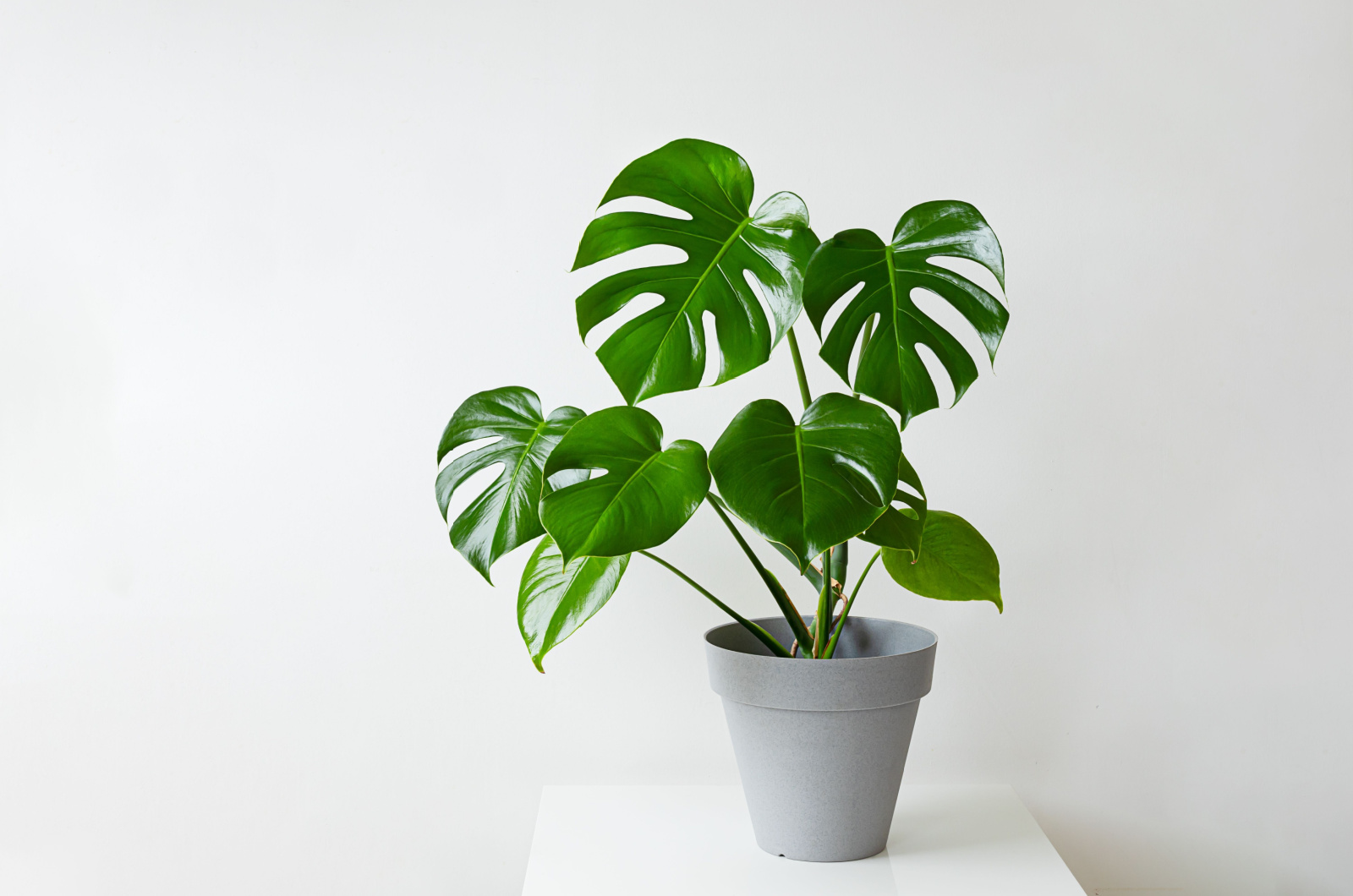
Soil: Moist, nutrient-rich, and well-draining
Water: When the top is dry
Size: Up to 10 ft as a houseplant
Monstera plant care is pretty straightforward. Keep it in indirect sunlight, feed it every once in a while, and make sure it doesn’t dry out.
This easy-to-care for houseplant is perfect for beginners and will brighten up your darker rooms.
You do have to be aware of its size though. If you don’t have a lot of space, you can allow it to trail in a hanging basket or prune it to control its growth.
#14 Palm Trees
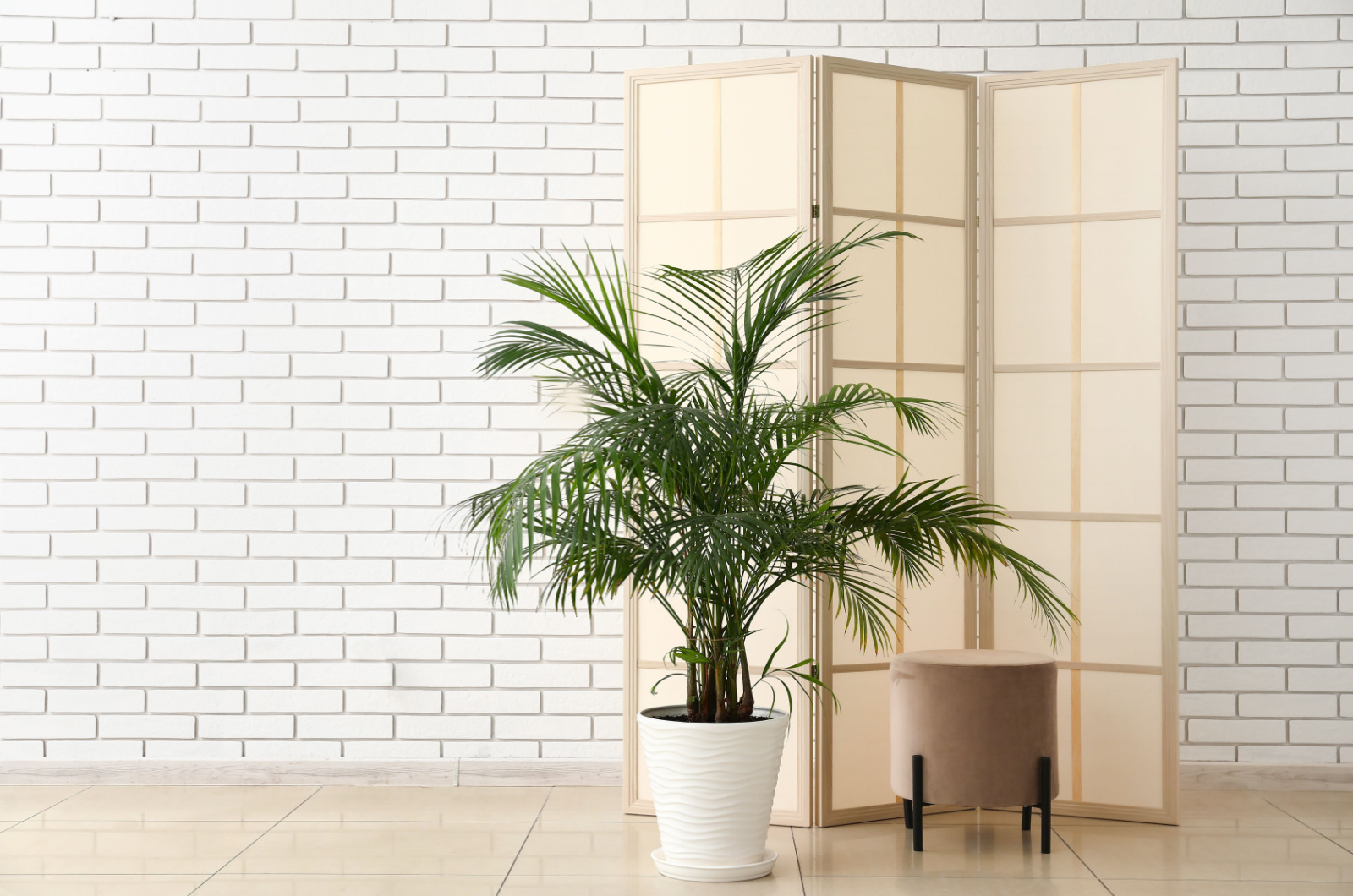
Soil: Fertile and well-draining
Water: When the top is dry
Size: Depends on the variety
There are many indoor palm trees you can try out.
If you want something compact, go with the famous parlor palm. It only grows up to 4 feet indoors, but makes quite a statement.
Or you can try the unusual ponytail palm (which is actually a succulent). It may need more light, but its other requirements are almost non-existent. It can go many weeks without water, so it’s perfect for those who travel a lot (or forget to water their plants).
#15 Peace Lily
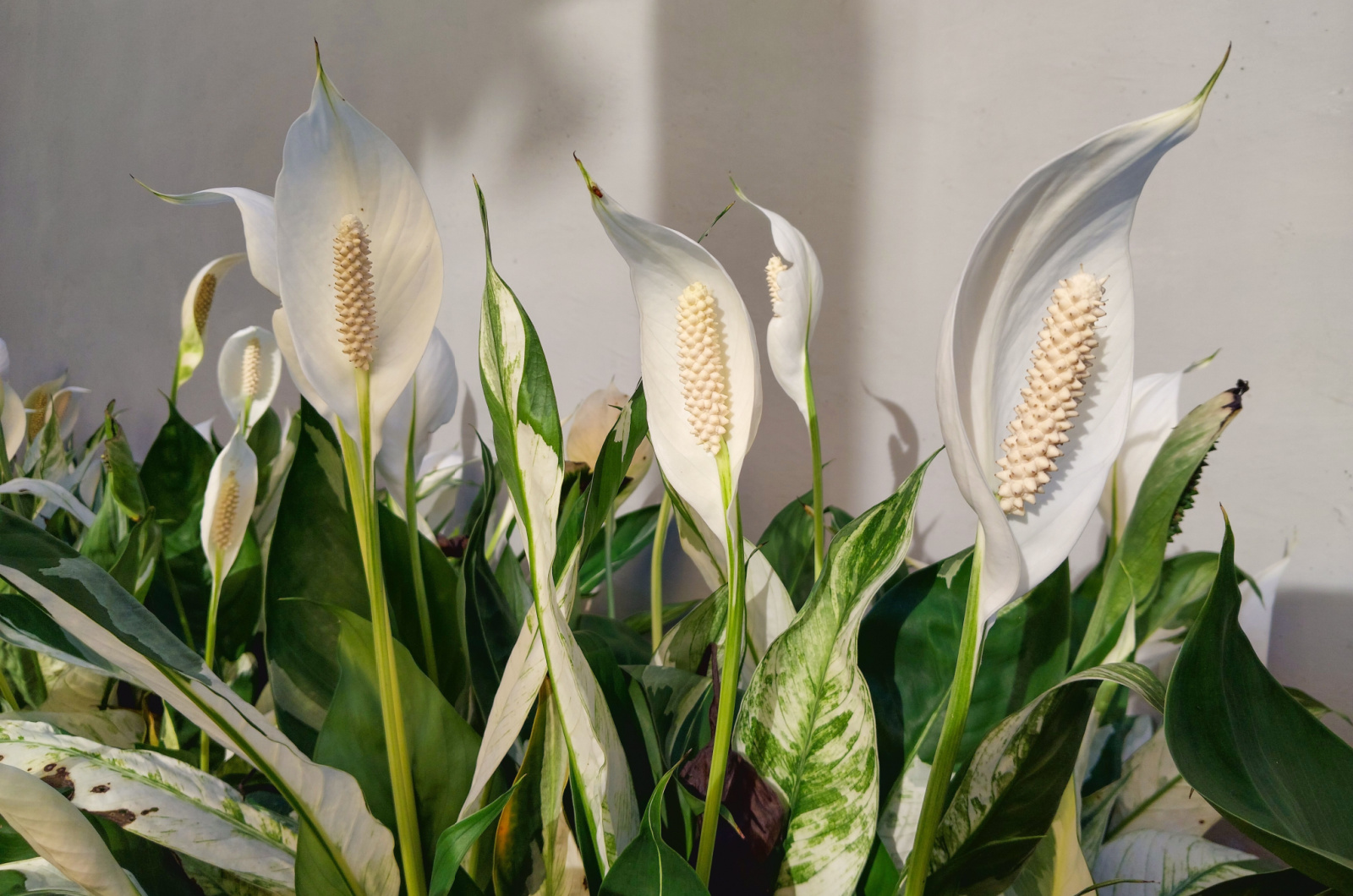
Soil: Moist and well-draining
Water: When the top is dry
Size: 2-3 ft tall
Did you know that there are many peace lily varieties out there, some even with green flowers? And they all flourish in low-light conditions!
What’s better than this?
I know! Variegated leaves. But there are peace lilies with colorful leaves, too. See, this plant has it all!
#16 Peperomia
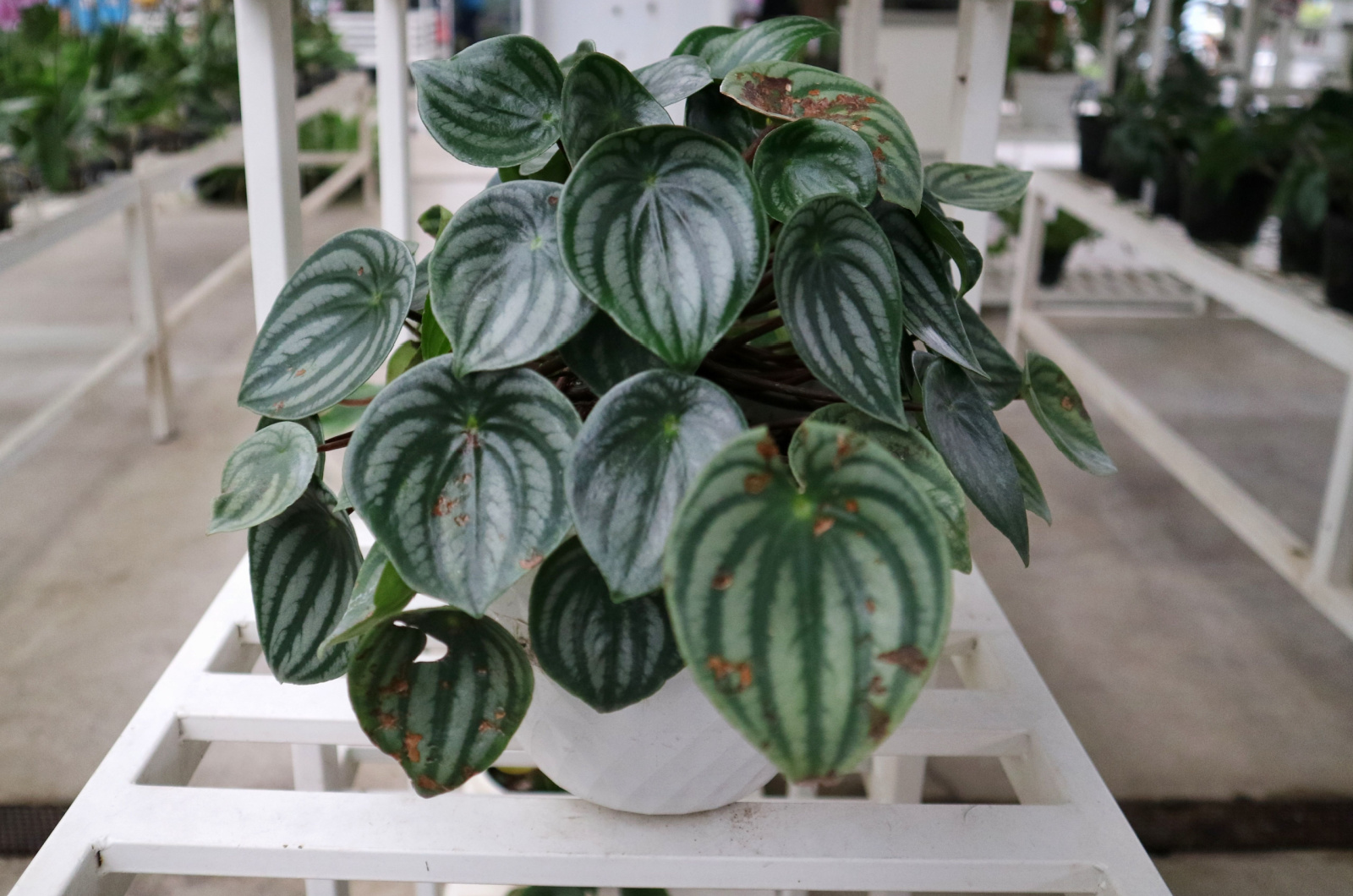
Soil: Light, loose, and aerated
Water: When the top is dry
Size: 2-36 in tall, 4-18 in wide
This compact plant is perfect for smaller rooms that don’t get enough sunlight. It doesn’t need too much light to obtain deep green foliage.
Also, peperomia plant care is very simple, which makes this houseplant perfect for beginners.
What makes peperomia plants so unique is the foliage. It comes in many different shapes, making it appear as if you have a whole different plant, not just the variety.
#17 Philodendron
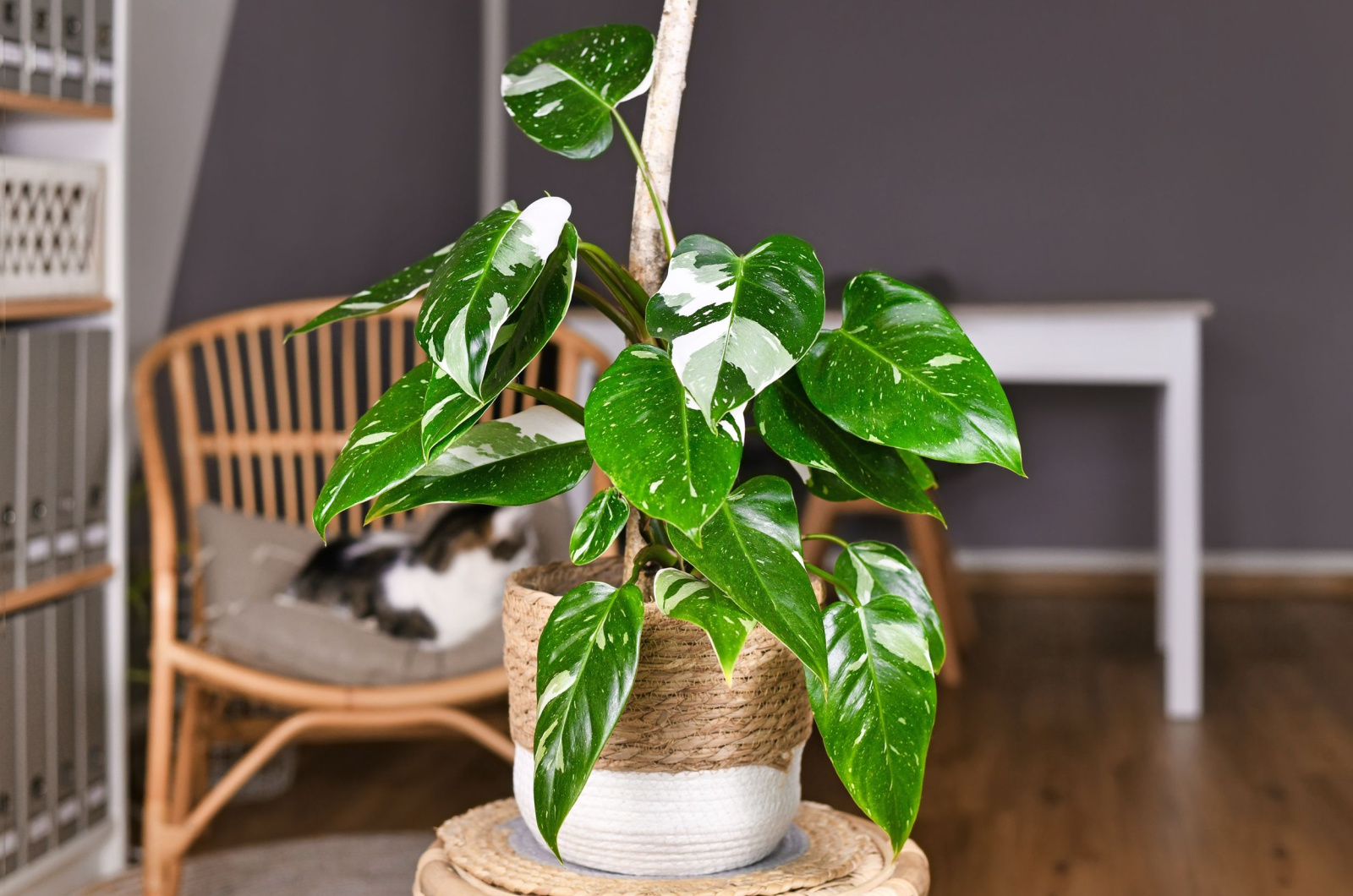
Soil: Fertile and well-draining
Water: When the top is dry
Size: Trailing stems extend up to 8 feet
When you look at the philodendron care guide, you’ll see how easy it is to care for. All it needs is well-draining and fertile soil, moisture when it starts to dry out, and indirect light.
Go for all-green, golden, or white-variegated varieties. Each will bring something to your decor!
#18 Pothos
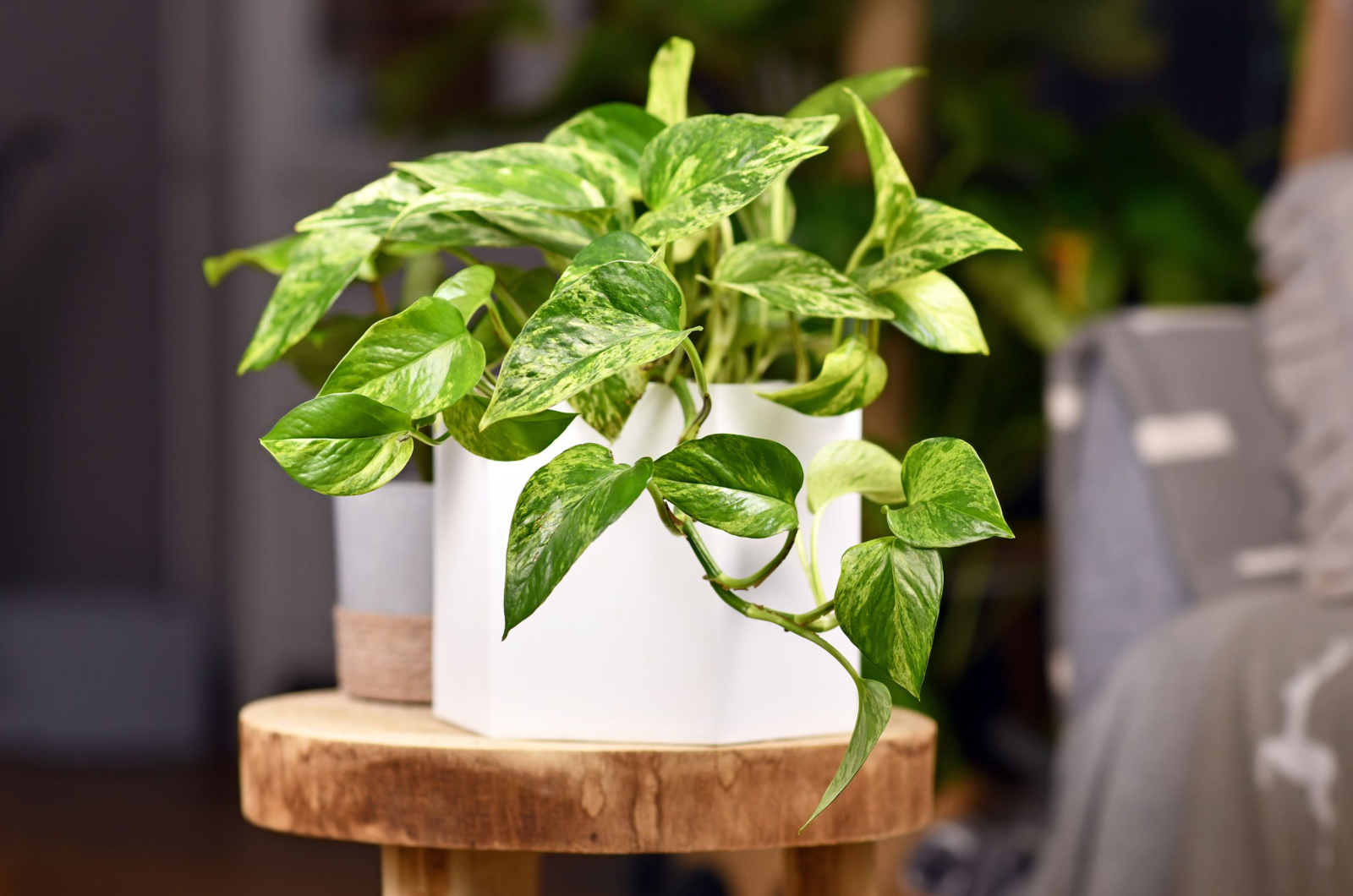
Soil: Fertile and well-draining
Water: When the top is dry
Size: 20-40 ft long
Don’t let the trailing size scare you! You can prune your pothos and keep its length to your preference.
Follow the pothos plant care guide, and you’ll have no trouble raising this trailing beauty.
Golden, dark or light green, and variegated species are all ideal additions to every home. Train them onto a trellis or let them spill over the rims of your hanging baskets.
#19 Prayer Plant
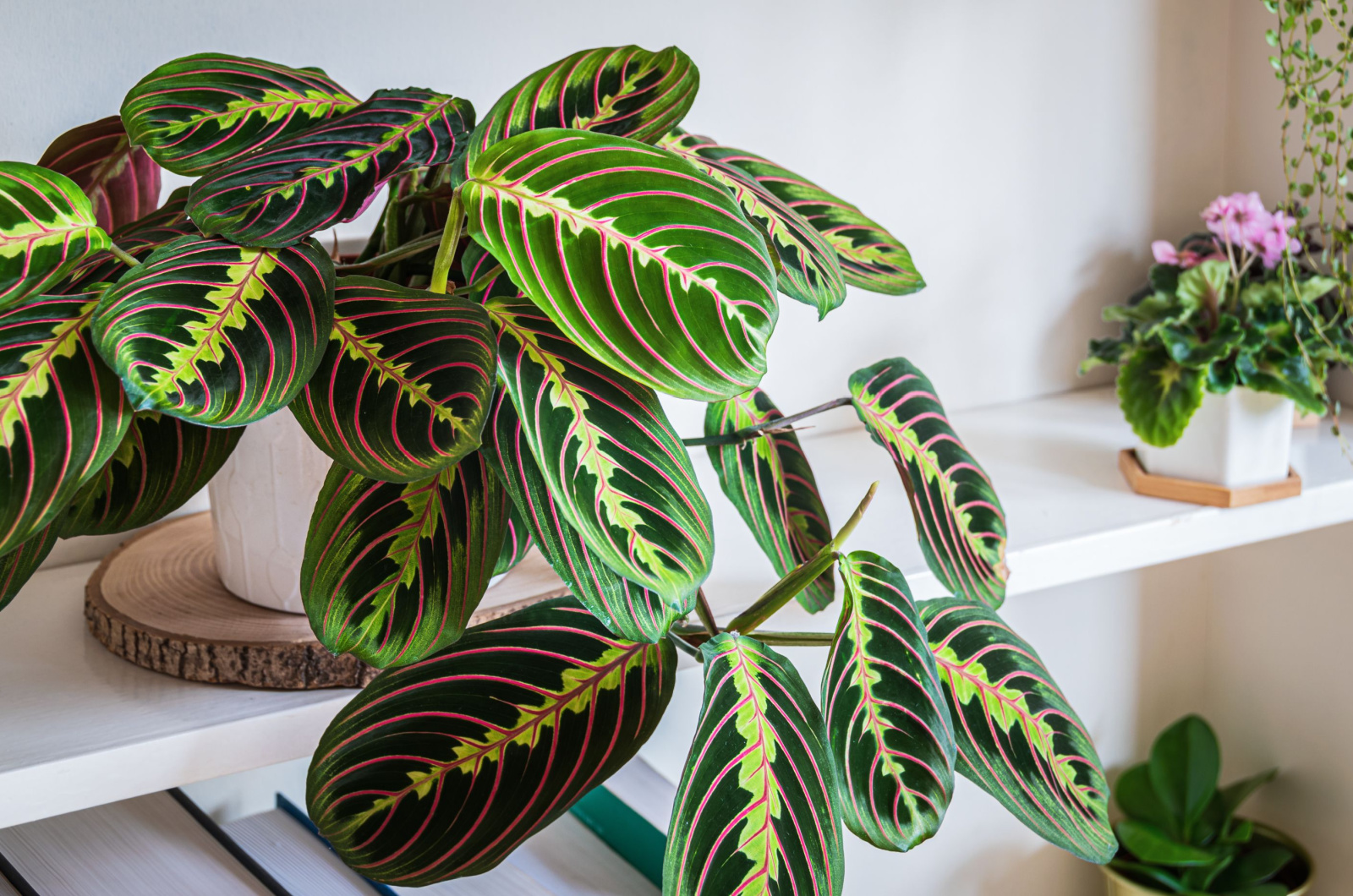
Soil: Rich, loamy, and well-draining
Water: When the top is dry
Size: 1 foot tall and wide
When you look at the prayer plant care guide, you’ll wonder why you didn’t get this low-maintenance houseplant sooner!
It doesn’t need too much sunlight to provide you with unique colors. Red veins, dark leaves, and light green centers. What more could you wish for?!
And the fact that they don’t grow taller than a foot (sometimes not even as tall as that) makes them a perfect decoration for your bookshelf!
#20 Snake Plant
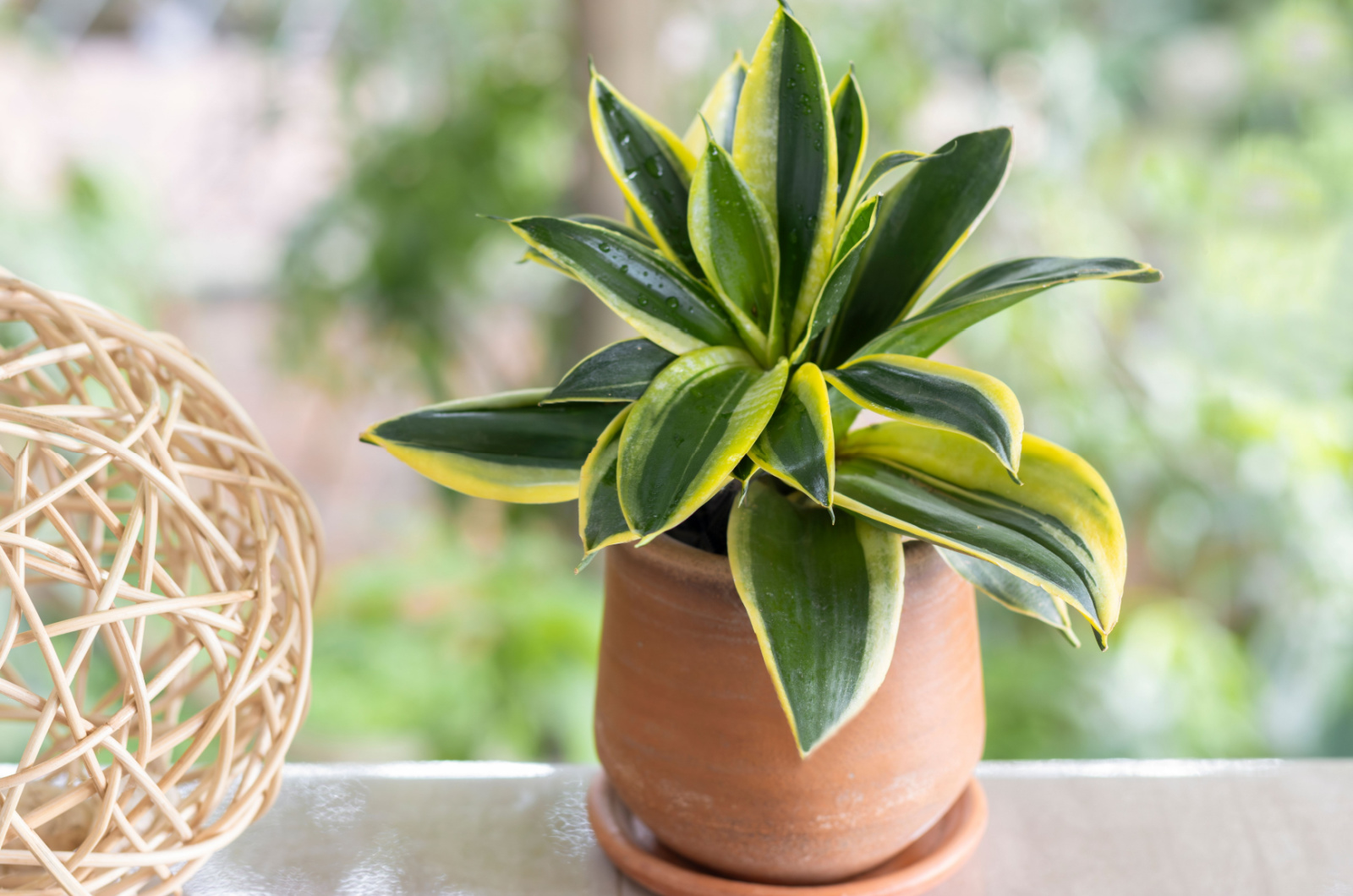
Soil: Sandy and well-draining
Water: When the top is dry
Size: Around 2 ft tall as a houseplant
Did you know that you can grow your snake plant in water? This makes its care even more simple than having to repot it every once in a while, checking its soil for moisture, etc.
But that’s not even the best part! This plant can tolerate various light conditions, from bright to low levels. That makes it perfect for almost every room, even ones without windows!
#21 Spider Plant
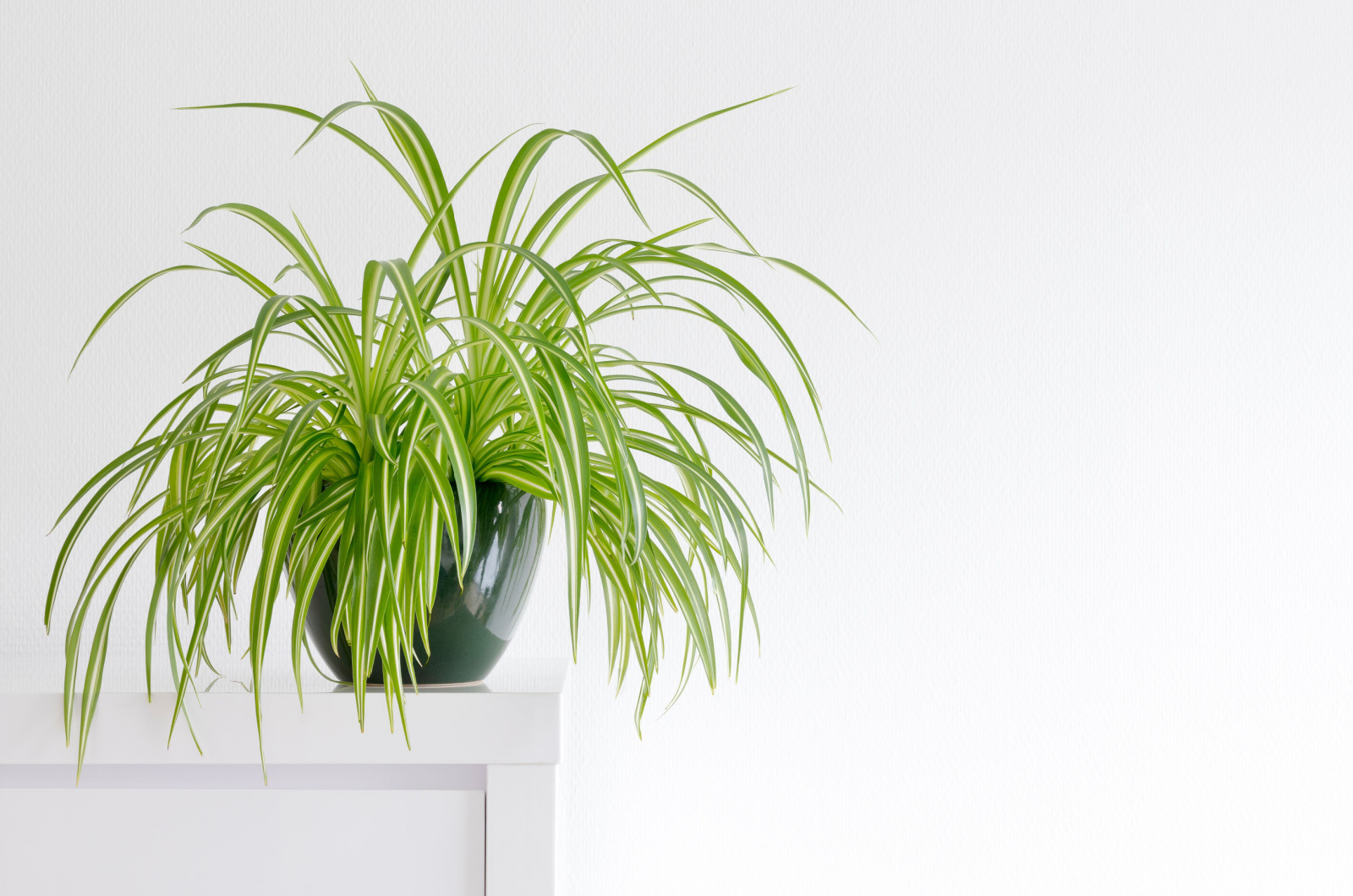
Soil: Moist, nutrient-rich, and well-draining
Water: When the top is dry
Size: 1-2 ft tall, 1-3 ft wide
By now, you know I like plants that offer more than variety. One such example are airplane (spider) plants.
Different types of spider plants may look similar, but their variegations differ. There is even a variety with curly leaves that looks stunning in hanging baskets.
Choose the color that fits your decor the best and enjoy this low-maintenance houseplant!
#22 Spineless Yucca

Soil: Sandy and well-draining
Water: When the soil is dry
Size: About 5 ft tall as a houseplant
Spineless yucca does need a bit more space, but it makes for a true statement piece. Leathery, lance-shaped foliage and tan bark are all it takes to make your home more homely.
And to make matters even better, the spineless yucca care guide is a breeze. There’s no need for frequent watering or too much light.
In fact, you’ll have to care for your plant even less when you place it in lower light levels. That’s because it won’t grow as fast, so you’ll need to repot and water it less often.
#23 ZZ Plant
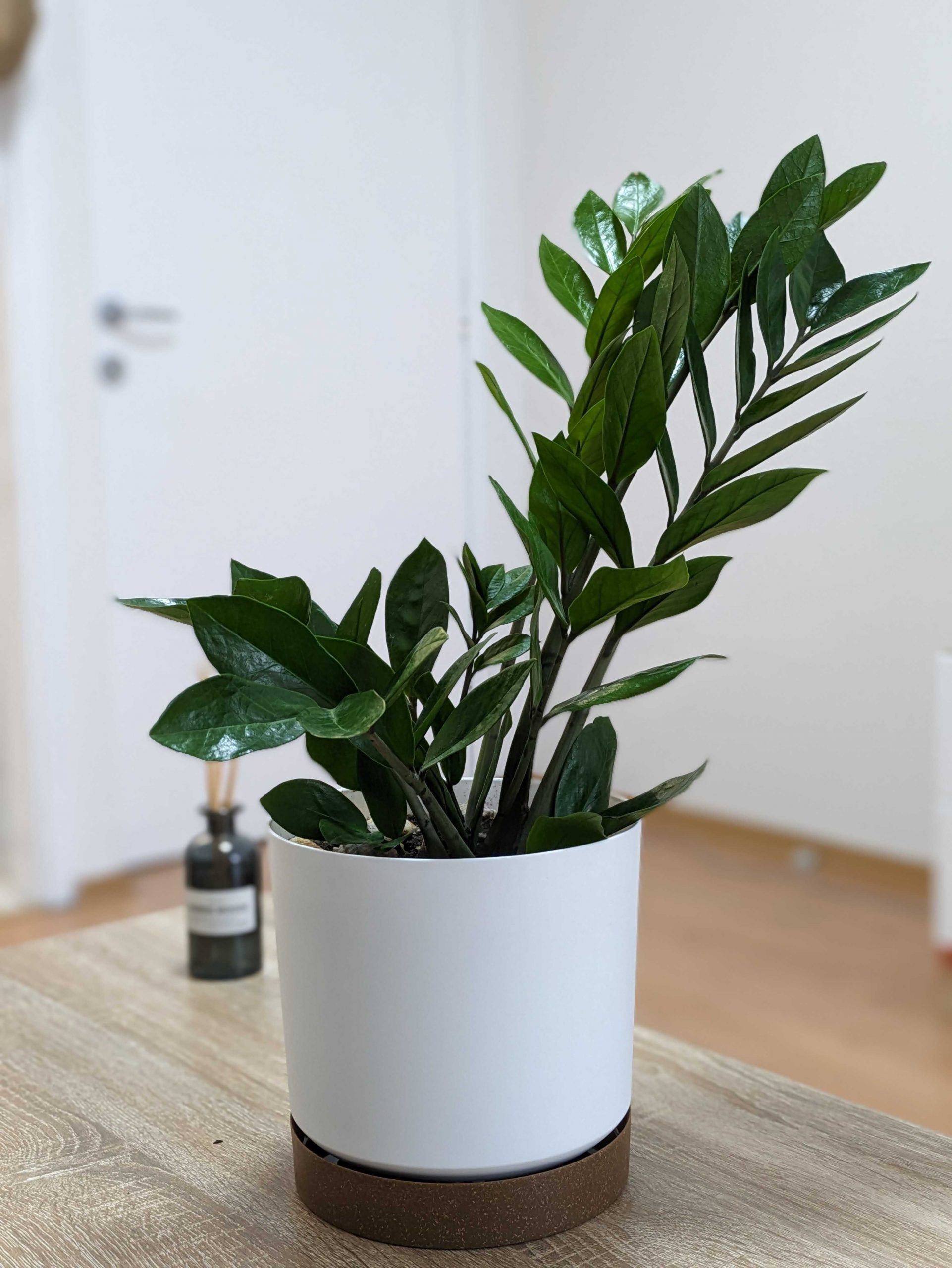
Soil: Light and well-draining
Water: When the top is dry
Size: 2-4 ft tall
The ZZ plant is one of my favorite plants out there. It can tolerate low-light levels like a champ and doesn’t require too much care.
There are many zz plant varieties, but my choice will always be the classic green one. Yet, you can go with golden or white variegations if they fit your decor.
